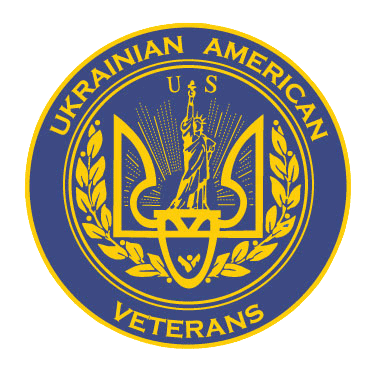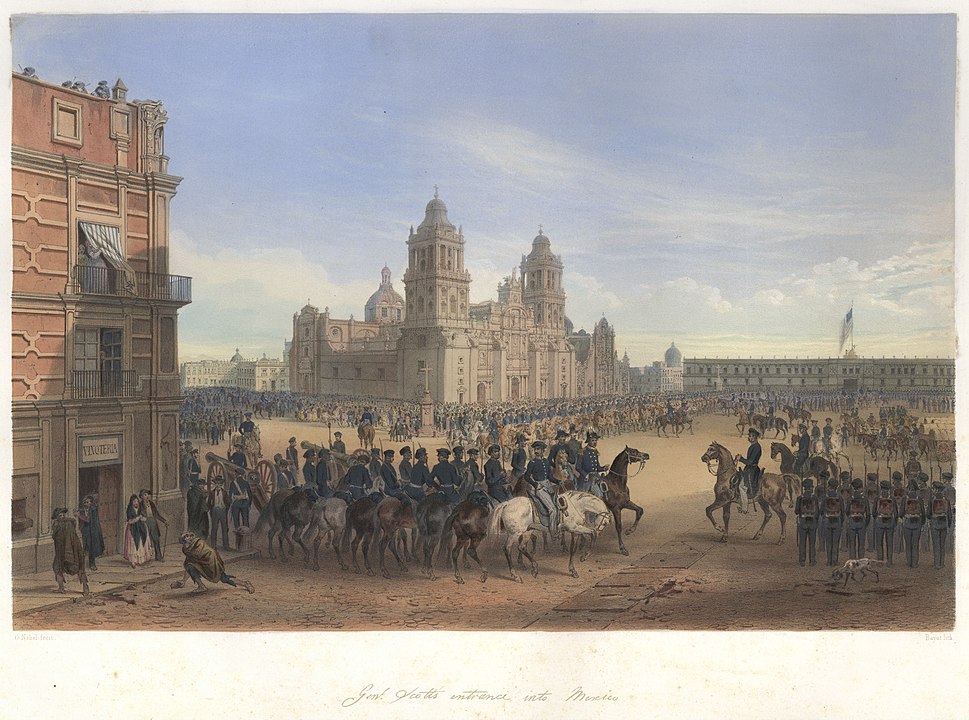
Did you ever wonder which are the oldest American veteran organizations? When you think of the oldest American veteran organization, you probably think of the American Legion or your local VFW post. You might be surprised to learn that the VFW and American Legion aren’t the oldest. In fact, they aren’t even in the top five (the VFW barely cracks the top 10).
Or perhaps you consider the traditions of the US Navy, so you might guess that the Navy League is oldest. Nope, not even close.
Oh, don’t forget the ethnic associations like the Jewish War Veterans, Italian American War Veterans, Ukrainian American Veterans and the Polish Legion of American Veterans; those are all pretty old, but none of them are the oldest.
The honor of the oldest American veteran organization falls to…
1700s
- Society of the Cincinnati, May 1783
The Society of the Cincinnati is the oldest American veteran organization, founded in 1783 by officers of the Continental Army and their French counterparts who served together in the American Revolution. Its mission is to promote knowledge and appreciation of the achievement of American independence and to foster fellowship among its members. Now a nonprofit educational organization devoted to the principles and ideals of its founders, the modern Society maintains its headquarters, library, and museum at Anderson House in Washington, DC.
The Society is also our nation’s first hereditary organization. The founders of the Society assigned their descendants the task of preserving the memory of the patriotic sacrifices that made American liberty a reality.
The Society of the Cincinnati was founded by officers at the Continental Army encampment at Newburgh, New York, in May 1783. The organization took its name from the ancient Roman hero Lucius Quinctius Cincinnatus, an embodiment of civic virtue. Its founding document, the Institution, outlined the aims of the new organization: to perpetuate the memory of the War for Independence, maintain the fraternal bonds between the officers, promote the ideals of the Revolution, support members and their families in need, distinguish its members as men of honor, and advocate for the compensation promised to the officers by Congress. To achieve these aims, the Society called on its members to contribute a month’s pay. In order to perpetuate their fellowship, the founders made membership hereditary. George Washington was the first president general of the Society. The army’s chief of artillery, Henry Knox, was the chief author of the Institution, and is credited with conceiving the idea of forming the society.
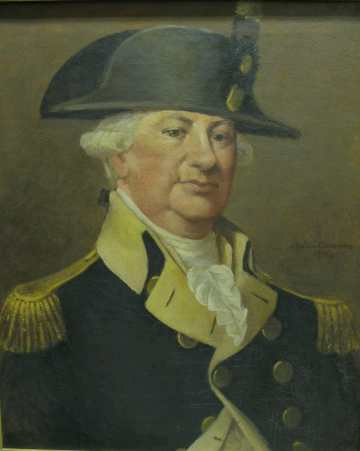
1800s
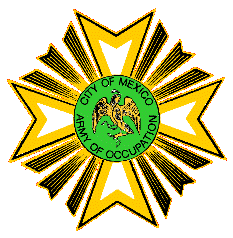 The Aztec Club of 1847 is a military society founded in 1847 by United States Army officers of the Mexican–American War. It exists as a hereditary organization including members who can trace a direct lineal connection to those originally eligible. Similar to the earlier Society of the Cincinnati, which arose out of the officer class of the American Revolutionary War, the Aztec Club was a precursor of veterans’ organizations like the Grand Army of the Republic, the Military Order of the Loyal Legion of the United States and the United Confederate Veterans which were formed by veteran officers after the American Civil War.
The Aztec Club of 1847 is a military society founded in 1847 by United States Army officers of the Mexican–American War. It exists as a hereditary organization including members who can trace a direct lineal connection to those originally eligible. Similar to the earlier Society of the Cincinnati, which arose out of the officer class of the American Revolutionary War, the Aztec Club was a precursor of veterans’ organizations like the Grand Army of the Republic, the Military Order of the Loyal Legion of the United States and the United Confederate Veterans which were formed by veteran officers after the American Civil War.
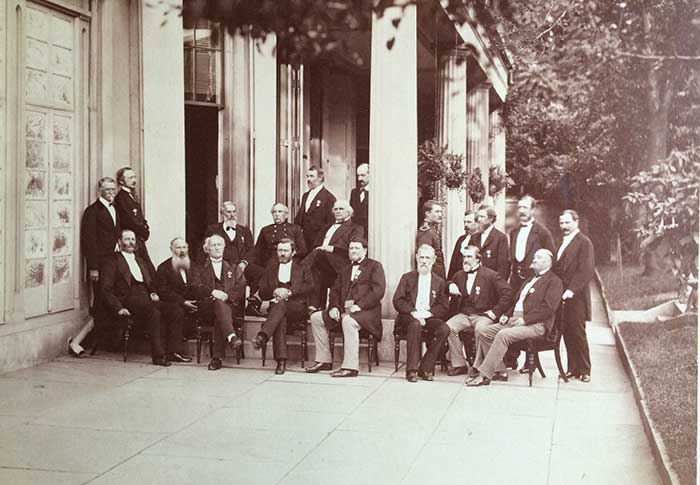
- Aztec Club of 1847, 13 October 1847
- Military Order of the Loyal Legion of the United States (MOLLUS), 15 April 1865
- United States Naval Institute (USNI), 9 October 1873
- National Guard Association of the United States, 1878
- Navy Mutual Aid Association, 1879
- Army and Navy Union of the United States of America, 31 March 1888
- Military Order of Foreign Wars of the United States (MOFW), 13 December 1894
- Jewish War Veterans, 1896
- Veterans of Foreign Wars (VFW), 29 September 1899
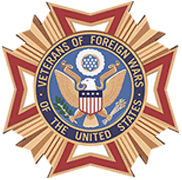 The Veterans of Foreign Wars (VFW) is an organization comprised of eligible veterans and military service members from the active, guard and reserve forces who served the nation in wars, campaigns, and expeditions on foreign soil or in hostile waters. The purpose of the VFW is to speed rehabilitation of the nation’s disabled and needy veterans, assist veterans’ widows and orphans and the dependents of needy or disabled veterans, and promote Americanism by means of education in patriotism and by constructive service to local communities.
The Veterans of Foreign Wars (VFW) is an organization comprised of eligible veterans and military service members from the active, guard and reserve forces who served the nation in wars, campaigns, and expeditions on foreign soil or in hostile waters. The purpose of the VFW is to speed rehabilitation of the nation’s disabled and needy veterans, assist veterans’ widows and orphans and the dependents of needy or disabled veterans, and promote Americanism by means of education in patriotism and by constructive service to local communities.
The VFW traces its roots back to 1899 when veterans of the Spanish-American War (1898) and the Philippine Insurrection (1899-1902) founded local organizations to secure rights and benefits for their service. Many arrived home wounded or sick. There was no medical care or veterans’ pension for them, and they were left to care for themselves. Some of these veterans banded together and formed organizations that would eventually unite and become known as the Veterans of Foreign Wars of the United States.
1900s
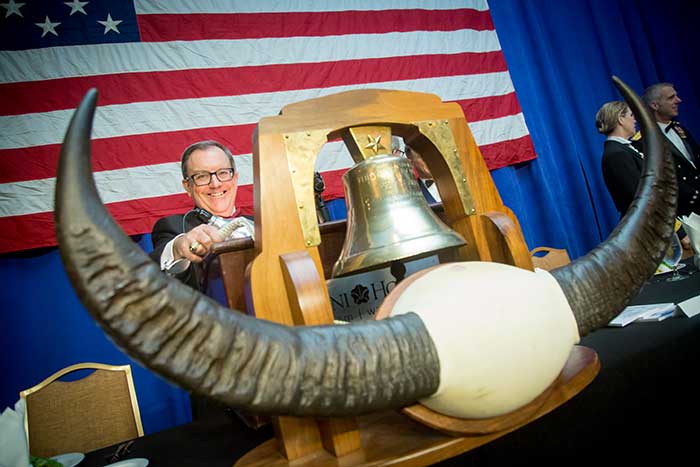
The Military Order of the Carabao is not the oldest American veteran organization, but it is probably one of the most unique organizations associated with our nation’s military history. It was founded in 1900 to counter and satirize the very pompous Order of the Dragon, which was founded by those who had defeated the very short-lived Boxer uprising in China. This idea for a lampoon was conceived by several Army officers one night at the Army-Navy Club in Manila during the Philippine Insurrection. As with most jests, it contained a serious ingredient which gradually surfaced to eclipse the initial joke. The Carabao Order came to epitomize the camaraderie that grows among members of the armed forces who face the dangers and privations of extensive military service far from home. While the original spoof was real enough, the Carabao Order came to epitomize the camaraderie that grows among members of the armed forces who face the dangers and privations of extensive military service far from home. By the way, the effete Order of the Dragon was disbanded many years ago.
1910s
- Marine Corps Association (MCA), 25 April 1913
- 40 & 8 (La Societe des Quarante Hommes et Huit Chevaux), 1919
- American Legion, 15 March 1919
T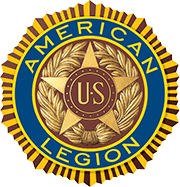 he American Legion was chartered by Congress in 1919 as a patriotic veterans organization. Focusing on service to veterans, servicemembers and communities, the Legion evolved from a group of war-weary veterans of World War I into one of the most influential nonprofit groups in the United States. It is the nation’s largest wartime veterans service organization, committed to mentoring youth and sponsorship of wholesome programs in our communities, advocating patriotism and honor, promoting strong national security, and continued devotion to our fellow servicemembers and veterans.
he American Legion was chartered by Congress in 1919 as a patriotic veterans organization. Focusing on service to veterans, servicemembers and communities, the Legion evolved from a group of war-weary veterans of World War I into one of the most influential nonprofit groups in the United States. It is the nation’s largest wartime veterans service organization, committed to mentoring youth and sponsorship of wholesome programs in our communities, advocating patriotism and honor, promoting strong national security, and continued devotion to our fellow servicemembers and veterans.
1920s
- Society of American Military Engineers (SAME), 1920
- Military Order of the Cootie, 17 September 1920
- Disabled American Veterans (DAV), 25 September 1920
- Fleet Reserve Association (FRA), October, 1922
- Marine Corps League, 1923
- Military Officers Association of America, 23 February 1929
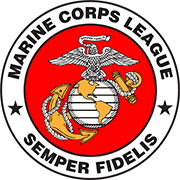 The Marine Corps League perpetuates the traditions and spirit of ALL Marines and Navy FMF Corpsmen, who proudly wear or who have worn the eagle, globe and anchor of the Corps. It takes great pride in crediting its founding in 1923 to World War I hero, then Major General Commandant John A. Lejeune. It takes equal pride in its Federal Charter, approved by An Act of the Seventy-Fifth Congress of the United States of America and signed and approved by President Franklin D. Roosevelt on August 4, 1937. The League is the only Federally Chartered Marine Corps related veterans organization in the country. Since its earliest days, the Marine Corps League has enjoyed the support and encouragement of the active duty and Reserve establishments of the U. S. Marine Corps. Today, League membership is open to men and women, officer and enlisted, active duty, Reserve Marines, honorably discharged Marine Veterans, qualified Navy FMF Corpsmen and qualified Navy FMF Chaplains.
The Marine Corps League perpetuates the traditions and spirit of ALL Marines and Navy FMF Corpsmen, who proudly wear or who have worn the eagle, globe and anchor of the Corps. It takes great pride in crediting its founding in 1923 to World War I hero, then Major General Commandant John A. Lejeune. It takes equal pride in its Federal Charter, approved by An Act of the Seventy-Fifth Congress of the United States of America and signed and approved by President Franklin D. Roosevelt on August 4, 1937. The League is the only Federally Chartered Marine Corps related veterans organization in the country. Since its earliest days, the Marine Corps League has enjoyed the support and encouragement of the active duty and Reserve establishments of the U. S. Marine Corps. Today, League membership is open to men and women, officer and enlisted, active duty, Reserve Marines, honorably discharged Marine Veterans, qualified Navy FMF Corpsmen and qualified Navy FMF Chaplains.
1930s
- Polish Legion of American Veterans (PLAV), September 1931
- Military Order of the Purple Heart (MOPH), 1932
- Italian American War Veterans, 1932
- Catholic War Veterans, 9 May 1935
1940s
- American Ex-Prisoners of War, 14 April 1942
- American Veterans (AMVETS), 10 December 1944
- Blinded Veterans Association , 28 March 1945
- Air Force Association (AFA), 4 February 1946
- Paralyzed Veterans of America, 1946
- American GI Forum (AGIF), 26 March, 1948
- Ukrainian American Veterans (UAV), 31 May 1948
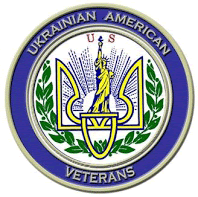 Ukrainian American Veterans Post 1 was formed in September 1921 in Philadelphia. Other posts were organized in different cities, but due to great distance and lack of numbers, a national organization did not materialize in this time period. After World War II, a larger number of veterans emerged, new posts were formed, and interest rose in creating an organization of national scope. During the 1947 Convention of the Ukrainian Youth League of North America, several delegates met and expressed their desire to form such an association. Major Michael Darmopray made the preparations for Post 1 to host a National Convention at the Penn Sheraton Hotel in Philadelphia, during Memorial Day Weekend of 1948. Fifty-five delegates arrived to participate in the first National Convention where a Constitution and By-Laws was adopted. A National Commander and National Executive Board were elected to lead the organization.
Ukrainian American Veterans Post 1 was formed in September 1921 in Philadelphia. Other posts were organized in different cities, but due to great distance and lack of numbers, a national organization did not materialize in this time period. After World War II, a larger number of veterans emerged, new posts were formed, and interest rose in creating an organization of national scope. During the 1947 Convention of the Ukrainian Youth League of North America, several delegates met and expressed their desire to form such an association. Major Michael Darmopray made the preparations for Post 1 to host a National Convention at the Penn Sheraton Hotel in Philadelphia, during Memorial Day Weekend of 1948. Fifty-five delegates arrived to participate in the first National Convention where a Constitution and By-Laws was adopted. A National Commander and National Executive Board were elected to lead the organization.
1950s
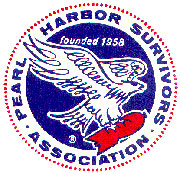 Founded in 1958 and recognized by the United States Congress in 1985, the Pearl Harbor Survivors Association was a World War II veterans organization whose members were on Pearl Harbor or three miles or less offshore during the Japanese attack on Pearl Harbor, on December 7, 1941. Although it officially disbanded at the end of December 2011, informal social and local activities involving Pearl Harbor survivors continue.
Founded in 1958 and recognized by the United States Congress in 1985, the Pearl Harbor Survivors Association was a World War II veterans organization whose members were on Pearl Harbor or three miles or less offshore during the Japanese attack on Pearl Harbor, on December 7, 1941. Although it officially disbanded at the end of December 2011, informal social and local activities involving Pearl Harbor survivors continue.
The Sons and Daughters of Pearl Harbor Survivors (SDPHS) was founded on December 6, 1972, in St. Petersburg, Florida. On October 20, 1973, the SDPHS became an independent nationwide organization.
1960s
- Non Commissioned Officers Association (NCOA), 1960
- Air Force Sergeants Association (AFSA), 3 May 1961
- Retired Enlisted Association, 18 February 1963
- United States Submarine Veterans (USSVI), 24 May 1964
- Montford Point Marine Association, 1965
- Coast Guard Foundation, 1969
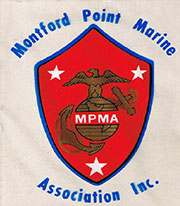 The Montford Point Marine Association (MPMA) is a nonprofit military veteran’s organization, founded to memorialize the legacy of the first African Americans to serve in the United States Marine Corps. The first African American U.S. Marines were trained at Camp Montford Point, in Jacksonville, North Carolina, from 1942 to 1949. The camp was decommissioned on September 9, 1949. Between 1942 and 1949, more than 20,000 men were trained at Montford Point.
The Montford Point Marine Association (MPMA) is a nonprofit military veteran’s organization, founded to memorialize the legacy of the first African Americans to serve in the United States Marine Corps. The first African American U.S. Marines were trained at Camp Montford Point, in Jacksonville, North Carolina, from 1942 to 1949. The camp was decommissioned on September 9, 1949. Between 1942 and 1949, more than 20,000 men were trained at Montford Point.
In 1965, a reunion of Marines was held in Philadelphia which included former Montford Point Marines along with Marines on active duty. With more than 400 Marines from throughout the United States gathered, they decided to establish the Montford Point Marine Association as a nonprofit veterans organization, to preserve military history and help people in need. The association has many chapters, and is a member of the Marine Corps Council, a council of Marine-related service groups. The Montford Point Marine Association maintains archives, and the Montford Point Marines Museum at Camp Gilbert H. Johnson, Jacksonville, North Carolina. It holds an annual convention to celebrate the Montford Point Marines, make organizational decisions, and distribute scholarships.
1970s
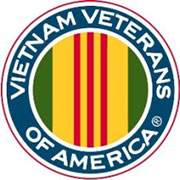 Vietnam Veterans of America (VVA) is a national non-profit corporation founded in 1978 that is committed to serving the needs of all veterans. It is funded without any contribution from any branch of government. VVA is the only such organization chartered by the United States Congress and dedicated to Vietnam veterans and their families. The group holds a congressional charter under Title 36 of the United States Code. Its founding principle is “Never again will one generation of veterans abandon another.”
Vietnam Veterans of America (VVA) is a national non-profit corporation founded in 1978 that is committed to serving the needs of all veterans. It is funded without any contribution from any branch of government. VVA is the only such organization chartered by the United States Congress and dedicated to Vietnam veterans and their families. The group holds a congressional charter under Title 36 of the United States Code. Its founding principle is “Never again will one generation of veterans abandon another.”
In 1983, VVA took a significant step by founding Vietnam Veterans of America Legal Services (VVALS) to provide assistance to veterans seeking benefits and services from the government. By working under the theory that a veteran representative should be an advocate for the veteran rather than simply a facilitator, VVALS quickly established itself as the most competent and aggressive legal-assistance program available to veterans. VVALS published the most comprehensive manual ever developed for veteran service representatives, and in 1985, VVALS wrote the widely acclaimed Viet Vet Survival Guide — over 150,000 copies of which are now in print. VVA’s professional membership services, veterans service, and advocacy work gained the respect of Congress and the veterans community. In 1986, VVA’s exemplary work was formally acknowledged by the granting of a congressional charter.
- Vietnam Veterans of America (VVA), January 1978
1980s
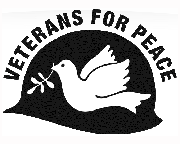 Veterans For Peace is a global organization of military veterans and allies whose collective efforts are to build a culture of peace by using their experiences and lifting their voices. They inform the public of the true causes of war and the enormous costs of wars, with an obligation to heal the wounds of wars. Their network is comprised of over 140 chapters worldwide whose work includes: educating the public, advocating for a dismantling of the war economy, providing services that assist veterans and victims of war, and most significantly, working to end all wars.
Veterans For Peace is a global organization of military veterans and allies whose collective efforts are to build a culture of peace by using their experiences and lifting their voices. They inform the public of the true causes of war and the enormous costs of wars, with an obligation to heal the wounds of wars. Their network is comprised of over 140 chapters worldwide whose work includes: educating the public, advocating for a dismantling of the war economy, providing services that assist veterans and victims of war, and most significantly, working to end all wars.
1990s
American Veterans for Equal Rights (AVER) is a non-profit organization which supports and advocates for the rights of lesbian, gay, bisexual and transgender veterans of the United States Armed Forces. It was founded by several LGBT veterans in 1990 as the Gay, Lesbian and Bisexual Veterans of America, the oldest organization of LGBT veterans. Miriam Ben-Shalom, a lesbian Army Reserve enlisted soldier who was discharged in 1975 by the military after it was revealed by a higher officer that she was lesbian, fought through the judicial system to retain her post. While initially successful, a higher federal Court of Appeals ultimately reversed the decision. To help defend others in similar situations, she worked with other LGBT veterans to establish the GLBVA in 1990. On May 2, 2005, the GLBVA changed its name to the American Veterans for Equal Rights.
2000s
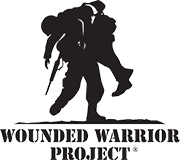 The Wounded Warrior Project (WWP) is a charity and veterans service organization that offers a variety of programs, services and events for wounded veterans of the military actions following September 11, 2001. It operates as a nonprofit 501(c)(3) organization.
The Wounded Warrior Project (WWP) is a charity and veterans service organization that offers a variety of programs, services and events for wounded veterans of the military actions following September 11, 2001. It operates as a nonprofit 501(c)(3) organization.
- Combat Veterans Motorcycle Association, May 2001
- Veterans for Common Sense (VCS), 2002
- Iraq War Veterans Organization, 12 April 2003
- Wounded Warrior Project, 2003
- Iraq and Afghanistan Veterans of America (IAVA), 2004
- Veterans Alliance for Security and Democracy (VETPAC), 2006
- Student Veterans of America (SVA), January 2008
- Vietnamese American Armed Forces Association, 23 August 2008
- Things We Read, 2011
- American Veterans Committee, April 2013
Methodology
You might wonder how we determined the dates to decide which are the oldest American veteran organizations. It took more than a little research. As far as we know, there is no other list of US veterans groups ranked by age. So we visited the website of each organization and read their history. Sometimes there was an exact date, sometimes just a year, sometimes no history at all. If the group’s own website didn’t have a date, we had to search a bit more. Wikipedia was a great resource, especially its “List of veterans’ organizations“.
We tried to use the date that the current, national organization was founded. Oftentimes an organization started with one small post or a single statewide group and then grew or merged and evolved. We didn’t penalize a group because it changed its name, but we took the later merger date when separate groups combined.
Note that we didn’t use the Federal Charter date for any organization, unless that’s the date that the group itself claims as its founding date.
Whom We Omitted
We only include groups that are still active. So groups like the Grand Army of the Republic (dissolved in 1956 after the death of its last member), the United Confederate Veterans (founded in 1889 and disbanded in 1951), the original American Veterans Committee (1943–2008), United Spanish War Veterans (dissolved in 1992), and the United States Submarine Veterans of World War II (founded in 1955 but disbanded in 2012) are not included in this list.
Feedback
Did we miss a group or get a date wrong? Contact the UAV Webmaster, and then we’ll do some more research. Please send links to make it easy for us verify the founding date of an organization.
